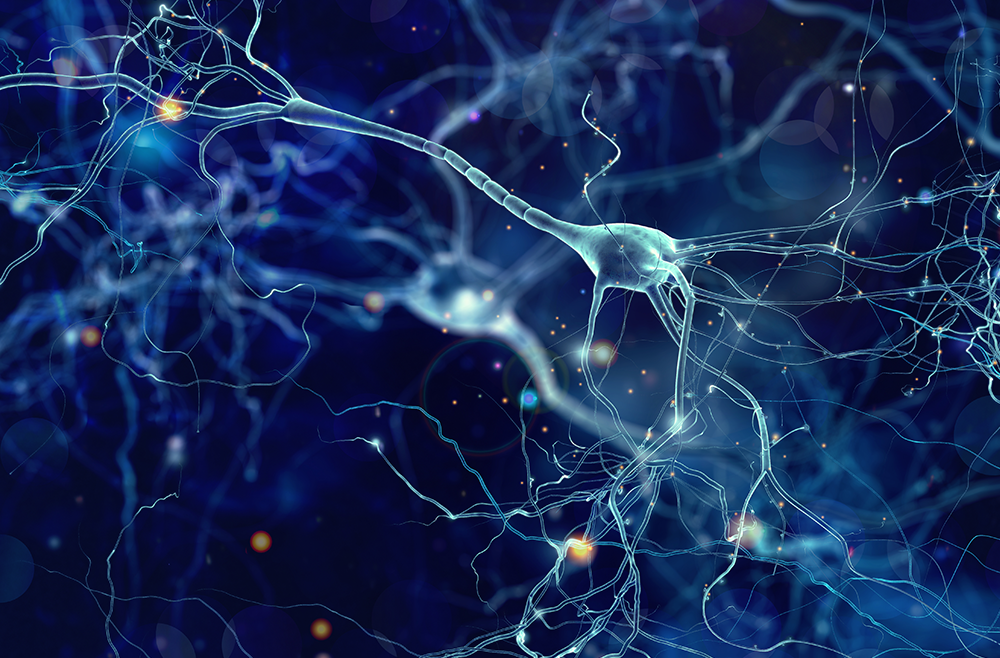
More than seven months into the battle against COVID-19, scientists have gained a better understanding of the disease and its symptoms while finding new and improved ways to test and treat patients. But countless mysteries remain. Why does COVID-19 cause some patients to lose their sense of smell and taste? What are the psychiatric and neurological complications now associated with COVID-19 infections—and can these issues be prevented?
Currently, there are a variety of research efforts across Penn to uncover the neurological implications of the disease, including stroke, neuroinflammation, and loss of smell.
Even though initial reports suggested a significant risk of stroke in patients hospitalized with COVID-19, research led by Brett Cucchiara, MD, an associate professor of Neurology at the Perelman School of Medicine, recently published in Stroke, showed a low risk.
“Yes, there is a connection between stroke and COVID-19, but we don’t want people to overly worry about this,” Cucchiara said. “It’s important to understand that the risk of stroke for those suffering from COVID-19 is fairly low — it’s impacting about two percent of patients hospitalized for the virus. And for every patient hospitalized, there are maybe 10 or 20 who aren’t — perhaps even more considering those who are asymptomatic.” That small percentage still merits continued investigation, Cucchiara added. He and his team are continuing to look at the linkage between stroke and COVID-19 to learn more about the virus and improve treatment for patients.
Exploring COVID-19’s Connections to the Nervous System
Stroke is just one of many neurological symptoms connected with COVID-19 that are under investigation.
Physicians now know that the virus affects the nervous system, explained Joseph R. Berger, MD, a professor of Neurology at the Perelman School of Medicine. A wide variety of neurological disorders have been observed with COVID-19, including encephalopathy, stroke, and delirium. While neurological complications appear to be more common in severe cases, typically occurring in older patients who have pre-existing risk factors, it’s not completely cut and dry — the precise origin and development of these disorders remains uncertain. The most common neurological problems with COVID-19 seem to be due to hypoxic-ischemic injury to the brain (a lack of oxygen in the brain due to low levels in the blood). Less frequently, other mechanisms are at play including direct viral invasion of the nervous system and an autoimmune response directed against the brain, spinal cord, or peripheral nerves that is triggered by the viral infection.
COVID-19 and Neuroinflammation
There is growing understanding that the severe complications of COVID-19 are not due to an uncontrolled infection with the virus, but rather one’s own immune response to the virus. Experts including Amit Bar-Or, MD, FRCPC, director of the Center for Neuroinflammation and Neurotherapeutics, are using their experience with immune therapies used to treat conditions like multiple sclerosis (a disease where the immune system attacks the central nervous system) to try to better understand COVID-19 and hopefully, find potential pathways for treatment.
Bar-Or is involved in efforts to study how different immune treatments affect a person’s immune cells (such as T cells, B cells, NK cells, and macrophage), and what these responses may be in the context of COVID-19 infections and the body’s response to the coronavirus. Research is underway to gain insights into what immune mechanisms actually cause serious COVID-19 complications and which treatments may be effective to treat the complications once they develop. Additionally, the Penn team is looking to identify immune measures that may predict who is at particular risk of those serious complications, since doing so could help prevent the development of the complications in the first place.
COVID-19 and Smell
Anosmia — loss of smell — is a more recent symptom added to the CDC’s list after the pandemic began. While some patients with COVID-19 are experiencing smell loss, the severity and amount of time it persists greatly varies. Some bounce back after they’ve recovered, while some only experience slight smell or taste loss, and others may lose their sense of smell for weeks.
Supported by a $197,357 grant from the NIH, Jay A. Gottfried, MD, PhD, a Penn Integrates Knowledge professor of Neurology in the Perelman School of Medicine and of Psychology in the School of Arts and Sciences, is determining if this symptom can be measured and utilized to identify patients most in need of medical attention.
“Our goal is to utilize smell testing as a platform for understanding if the degree of smell loss might be predictive of disease severity going forward. For example, if we find those with a worse sense of smell are more likely to end up in the ICU due to COVID-19 complications, this test could be used to identify and support these patients early on,” explained Gottfried.
Gottfried is utilizing Penn’s drive-through testing site in West Philadelphia to recruit study participants with suspected COVID-19. He and his team are monitoring sense of smell for participants over a 60-day period, using a smell test developed by Penn’s Richard L. Doty, PhD, to see how the disease and symptoms progress over time. He hopes to have enough data in a few months to provide meaningful results.
Experts are continuing to work tirelessly to fully understand COVID-19 and its health impacts. At this point, the best action people can take is to try to avoid the infection in the first place, Berger says. “Continue following CDC guidelines — practice social distancing, avoid touching your face, wash your hands often, and wear a mask or face covering while in public.”